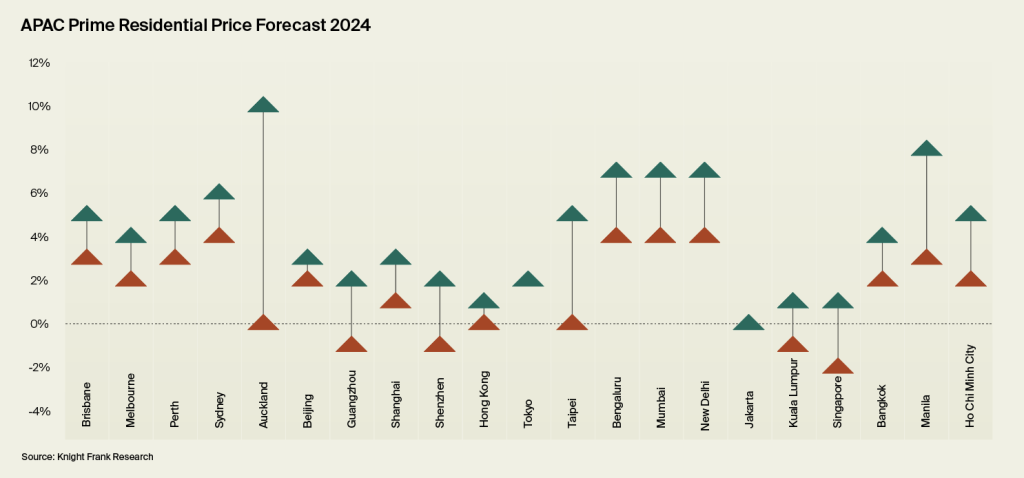Introduction
China’s property market, once a powerful engine driving the country’s economic growth, has recently been mired in significant challenges. A combination of soaring debt levels, government regulations, and a slowing economy has led to a downturn in the property sector, which has far-reaching consequences not just for China but for the entire Asia-Pacific region. As China’s property market woes persist, the ripple effects are being felt across neighboring economies, with both challenges and opportunities emerging as regional markets adapt to these shifts. This article delves into the current state of China’s property market, explores its impact on Asia-Pacific economies, and assesses the long-term outlook for property markets across the region.
1. The State of China’s Property Market
China’s property market has long been a cornerstone of its economic growth, contributing significantly to GDP, employment, and government revenues. Over the past two decades, rapid urbanization and a surge in demand for housing led to an unprecedented boom, with property prices reaching sky-high levels. Developers like Evergrande and Country Garden became household names, with sprawling real estate projects across the country. However, the foundation of China’s property boom began to crack in recent years.
Several factors have contributed to the current crisis in China’s property market. First, the government’s strict measures to curb excessive borrowing and speculative buying have led to a slowdown in the construction and sale of new homes. The “three red lines” policy, which limits the amount of debt property developers can take on, has particularly hurt highly leveraged developers, leaving many unable to complete projects. As a result, thousands of unfinished homes have caused widespread frustration among buyers.
Second, the COVID-19 pandemic exacerbated existing economic weaknesses, including reduced consumer confidence, tightening liquidity, and rising construction costs. These pressures have led to a drastic decline in property sales and price reductions in some markets, particularly in tier-2 and tier-3 cities. With millions of households investing heavily in property, the downturn has triggered broader concerns about the health of the financial system, which has become increasingly dependent on real estate.
Finally, demographic trends have also played a role. China’s aging population and declining birth rates mean that the demand for new housing may not keep pace with the supply, adding further downward pressure on the market. As a result, property prices are stagnating, and developers are struggling to adjust to this changing demand environment.

2. Impact on Neighboring Economies in the Asia-Pacific Region
China’s property market woes have sent shockwaves across the Asia-Pacific region, with several neighboring economies feeling the direct and indirect impacts. As one of the world’s largest economies and a major trading partner for many countries in the region, China’s slowdown affects global trade, investment flows, and regional growth prospects.
For countries like Hong Kong and Macau, which have historically had strong ties to China’s property sector, the slowdown is particularly concerning. Hong Kong’s real estate market, which has long been influenced by demand from mainland Chinese buyers, has experienced a decline in demand, leading to lower property prices and rental rates. The decline in China’s luxury real estate market has also affected high-end property developers in Hong Kong.
Similarly, the slowdown in China’s property market has had significant effects on Taiwan, South Korea, and Japan. These countries are major trading partners with China, and any slowdown in China’s economic activity translates to reduced demand for exports, particularly in manufacturing, technology, and raw materials. Moreover, China’s property sector crisis has led to a decrease in outbound Chinese investments, impacting countries that rely on Chinese capital inflows, especially in real estate and infrastructure sectors.
In Southeast Asia, countries such as Vietnam, Thailand, and Malaysia, which have attracted Chinese investments in real estate and construction, are also feeling the effects. A reduction in Chinese demand for property developments and a slowdown in infrastructure projects funded by Chinese capital have led to a decline in the pace of development in these countries. Additionally, many Chinese developers have scaled back their investments in overseas real estate markets, leaving a void in the sector.
3. How Regional Markets Are Adapting to China’s Slowdown
While the challenges posed by China’s property market crisis are substantial, many countries in the Asia-Pacific region are finding ways to adapt. The slowdown in China has prompted some countries to recalibrate their property market strategies and explore new avenues for growth.
In Japan, for example, the government has focused on stimulating domestic demand for housing by promoting policies aimed at increasing homeownership rates. Japan’s property market, though relatively insulated from China’s crisis, has also experienced a slow recovery from the pandemic, and the government is investing in initiatives that encourage real estate investment in regional areas to address urban-rural imbalances. The country is also turning to technology-driven solutions in real estate, such as smart homes and digital platforms for property transactions, to create new growth opportunities.
South Korea, on the other hand, has adopted a more cautious approach to its property market, given its close economic ties to China. The government has implemented stricter regulations to curb speculative investments and promote long-term stability in the housing sector. South Korea is also investing in eco-friendly and sustainable housing projects, capitalizing on growing interest in green building solutions.
Southeast Asian countries are taking a diverse approach to the challenges posed by the Chinese slowdown. In Vietnam, the government has been promoting domestic housing initiatives and enhancing affordability for first-time homebuyers to stimulate local demand. In Thailand, there has been a shift toward attracting investment from other regions, particularly Japan and South Korea, in light of reduced Chinese investment. Malaysia is leveraging its strategic location to attract foreign investors, including those from the Middle East, as an alternative to Chinese-backed real estate projects.
4. Long-Term Outlook for Asia-Pacific Property Markets
Looking ahead, the long-term outlook for property markets in the Asia-Pacific region remains mixed, with both risks and opportunities arising from the ongoing challenges in China’s property sector. The region’s property markets are likely to continue facing external pressures from China’s slowdown, as well as from broader global economic uncertainty, including rising interest rates and the ongoing effects of the pandemic.
However, Asia-Pacific economies are resilient, and many are well-positioned to adapt to the changing landscape. As China shifts away from its growth-at-all-costs model, regional markets may benefit from diversification and reduced reliance on Chinese demand. This shift could create opportunities for countries that can attract investment from other regions, such as Japan, the U.S., and the European Union.
Furthermore, the rise of technology-driven solutions in real estate, such as digital platforms, property technology (PropTech), and smart homes, is expected to play a significant role in shaping the future of property markets in the region. These innovations are likely to drive efficiency, sustainability, and transparency in property transactions, creating new growth areas.
Additionally, as urbanization continues across the region, demand for housing in emerging markets such as India, Indonesia, and the Philippines will likely increase. These markets offer substantial opportunities for growth, as younger populations seek modern housing solutions.
Conclusion
China’s property market troubles have had far-reaching effects across the Asia-Pacific region, impacting economies both directly and indirectly. While the slowdown has led to challenges, many countries are adapting by diversifying their strategies, investing in technology, and targeting new sources of demand. The long-term outlook for property markets in the Asia-Pacific region is cautiously optimistic, with emerging markets and innovations in the real estate sector offering significant potential for growth.





























